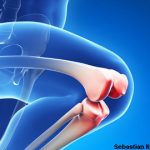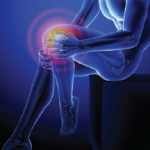 Based on their research findings, Julia C.A. Noorduyn, a PhD candidate at OLVG Amsterdam, the Netherlands, and colleagues conclude that physical therapy should be the preferred treatment relative to surgery for patients with degenerative meniscal tears. In their five-year study, published in July 2022 in JAMA Network Open, exercise-based physical therapy was noninferior to arthroscopic partial meniscectomy in these patients for patient-reported knee function.1
Based on their research findings, Julia C.A. Noorduyn, a PhD candidate at OLVG Amsterdam, the Netherlands, and colleagues conclude that physical therapy should be the preferred treatment relative to surgery for patients with degenerative meniscal tears. In their five-year study, published in July 2022 in JAMA Network Open, exercise-based physical therapy was noninferior to arthroscopic partial meniscectomy in these patients for patient-reported knee function.1
The noninferiority, randomized clinical trial known as Early Surgery vs. Conservative Therapy for Meniscal Injuries in Older Patients (ESCAPE) used the International Knee Documentation Committee Subjective Knee Form to collect and evaluate patient-reported data. Patients with degenerative meniscal tears (N=321) were randomized to receive either arthroscopic partial meniscectomy or physical therapy.
Patients in the physical therapy group received a physical therapist-led incremental exercise program that lasted for eight weeks and consisted of 16 sessions of 30 minutes each. If knee symptoms persisted after the physical therapy program, the patient could attend additional physical therapy sessions or opt for arthroscopic partial meniscectomy based on a shared decision with their orthopedic surgeon.
The Results
During the five-year follow-up period, 32% of patients from the physical therapy group underwent delayed arthroscopic partial meniscectomy. Additionally, the investigators found no significant or clinically relevant difference in patient-reported knee function between patients who received the exercise-based physical therapy and arthroscopic partial meniscectomy. Based on patient-reported knee function as measured by the International Knee Documentation Committee Subjective Knee Form, from baseline to five years, the mean (standard deviation, SD) improvement was 29.6 (18.7) points in the surgery group and 25.1 (17.8) points in the physical therapy group.
Both groups also had small, but comparable rates of progression of radiographic and symptomatic osteoarthritis (OA). However, the authors acknowledge that five years may not be long enough to see progression of knee OA.
When the investigators checked for confounding effects within their primary outcome of patient-reported knee function, their adjusted analyses were consistent with the primary unadjusted results. Thus, the improvement in knee function experienced by patients over the first two years of the ESCAPE trial were maintained at the five-year follow up.2
The study results join and are consistent with previously published trials with five-year, follow-up results for patient-reported knee function and pain.3 They also align with 2013 findings of a study of patients without knee OA and with symptoms of a degenerative medial meniscus tear that found the outcomes after arthroscopic partial meniscectomy were no better than those after a sham surgical procedure.4
“You shouldn’t be performing surgery when it’s not effective,” says Ms. Noorduyn. She notes that although one-third of their physical therapy patients elected to have surgery, she and her colleagues were unable to create a prediction model to identify these patients. Likewise, the orthopedic surgeons were unable to create a prediction model to identify which patients would be most likely to benefit from surgery.
Because guidelines state that conservative treatment should be first-line therapy, the authors suggest additional research should focus on facilitators and barriers for de-implementing arthroscopic partial meniscectomy.5
“The results are very consistent over time,” says Ms. Noorduyn. Because physical therapy is noninferior to surgery, she believes rheumatologists should recommend physical therapy and/or exercise therapy to patients with degenerative meniscal tears.
“Watchful waiting is also an option, but often patients have already done that and still have complaints,” she says. “People get a bit anxious when they have pain and wonder, ‘Should I be exercising?’” The advice from a rheumatologist to continue moving can be helpful.
Ms. Noorduyn suggests patients pursue two to three months of an incremental exercise program—with or without a physical therapist—before considering surgery. Such a program could include biking or leg raises and balancing activities working up to exercises on a balancing board. Her experience, which is consistent with the two-year data from the ESCAPE trial, is that after three months of an incremental exercise program, patient complaints decrease.
Because five years may not have been long enough to detect progression in knee OA, the team is planning a 10-year follow-up study using magnetic resonate imaging, which will address whether arthritis progresses more quickly in patients who have had their meniscal tissue removed.
“Our patients are really willing to … do the research,” Ms. Noorduyn says. “We have a follow-up rate of 78% over five years. It’s great to see.”
Lara C. Pullen, PhD, is a medical writer based in the Chicago area.
References
- Noorduyn JCA, van de Graaf VA, Willigenburg NK, et al. Effect of physical therapy vs arthroscopic partial meniscectomy in people with degenerative meniscal tears: Five-year follow-up of the ESCAPE randomized clinical trial. JAMA Netw Open. 2022 Jul 1;5(7):e2220394.
- van de Graaf VA, Noorduyn JCA, Willigenburg NW, et al. Effect of early surgery vs physical therapy on knee function among patients with non-obstructive meniscal tears: The ESCAPE randomized clinical trial. JAMA. 2018 Oct 18;320(13):1328–1337.
- Berg B, Roos EM, Englund M, et al. Development of osteoarthritis in patients with degenerative meniscal tears treated with exercise therapy or surgery: A randomized controlled trial. Osteoarthritis Cartilage. 2020 Jul;28(7):897–906.
- Sihvonen R, Paavola M, Malmivaara A, et al. Arthroscopic partial meniscectomy versus sham surgery for a degenerative meniscal tear. N Engl J Med. 2013 Dec 26;369(26):2515–2524.
- Abram SGF, Beard DJ, Price AJ, et al. Arthroscopic meniscal surgery: a national society treatment guideline and consensus statement. Bone Joint J. 2019 Jun;101-B(6):652–659.


